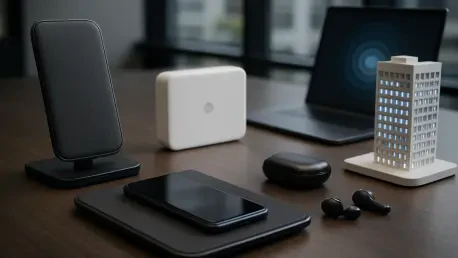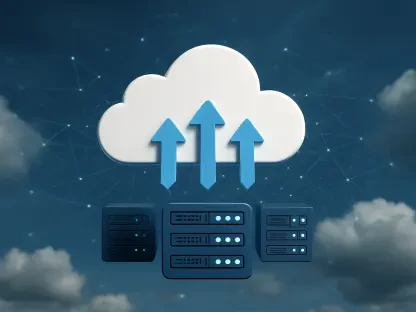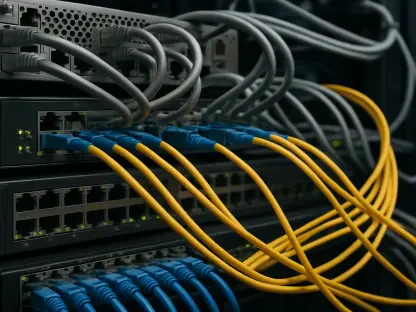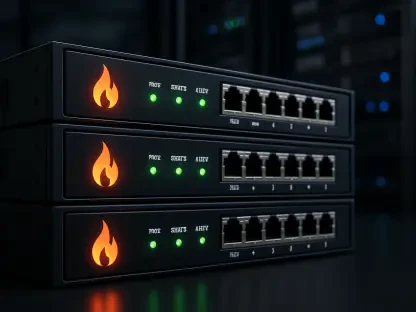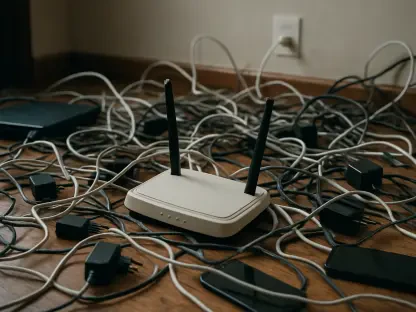Meet Matilda Bailey, a networking specialist with a deep focus on cutting-edge technologies like cellular, wireless, and next-gen solutions. With her finger on the pulse of innovation, Matilda has been exploring how wireless power can transform enterprise and industrial environments. In this engaging conversation, we dive into the potential of wireless power to reshape business operations, from induction charging for vehicles to ambient IoT for smart sensors and even laser-based long-distance power transmission. We’ll explore the game-changing benefits, the hurdles to widespread adoption, and the industries poised to lead the charge in this wireless revolution.
How did your interest in wireless power technologies for enterprise applications come about?
Honestly, it started with a fascination for how connectivity could evolve beyond just data transmission. I’ve always been intrigued by the idea of cutting the cord—literally. Working in networking, I saw how wireless communication transformed workplaces, and I began to wonder if power could follow the same path. The potential to eliminate cables in environments like warehouses or factories, where efficiency is everything, really hooked me. I started diving into research on induction charging and ambient IoT, and it became clear that this could be a game-changer for how businesses manage energy and operations.
What kind of impact do you think wireless power could have on business operations over the next decade?
I think we’re looking at a fundamental shift in how businesses design their spaces and workflows. Imagine offices or factories where devices, vehicles, and even small sensors never need to be plugged in or have batteries swapped out. Over the next ten years, I see wireless power enabling more flexible layouts in corporate campuses and industrial settings, reducing downtime for equipment charging, and cutting maintenance costs. It’s not just about convenience; it’s about creating smarter, more responsive environments where power is seamless and integrated into the infrastructure.
What do you see as the biggest barriers to making wireless power a common feature in workplaces?
There are a few significant hurdles. First, the upfront cost of installing wireless power systems can be daunting, especially for large-scale applications like electrified roadways or fleet charging. Then there’s the issue of standardization—different technologies and vendors have their own approaches, which can create compatibility headaches. Lastly, there’s a knowledge gap. Many businesses aren’t fully aware of the potential or how to integrate these systems without disrupting operations. Overcoming these barriers will require collaboration between tech providers, regulators, and enterprise leaders to build trust and streamline adoption.
Can you share some insights on how wireless power might lower costs or improve efficiency for companies?
Absolutely. Take induction charging for vehicles in a logistics company, for example. Instead of having delivery vans or forklifts sit idle at charging stations, they can recharge while parked or even in motion on specially designed roads or pads. This cuts downtime significantly and allows for smaller batteries, which reduces vehicle weight and cost. On another front, ambient IoT sensors powered wirelessly can monitor inventory or equipment without the labor of battery replacement, saving time and reducing human error. These efficiencies add up, especially for industries with tight margins like manufacturing or transportation.
Which industries do you believe stand to gain the most from adopting wireless power solutions?
I’d say logistics and transportation are at the top of the list, given the immediate benefits of induction charging for fleets and the tracking capabilities of ambient IoT sensors. Manufacturing is another big one—think wireless power for robots or tools in a factory, eliminating cable clutter and boosting safety. Healthcare also has huge potential, with medium-range charging for wearable devices or sensors in hospitals where sterility and mobility are critical. These sectors are already seeing pilot projects, and I expect them to drive mainstream adoption as the technology matures.
Could you explain how induction charging works for vehicles in industrial or business settings like factories or delivery fleets?
Sure. Induction charging, often called near-field charging, uses electromagnetic fields to transfer energy between two coils—one in the charging pad or road surface and another in the vehicle. When a vehicle parks over or drives along a charging area, the coils align, and power flows wirelessly to recharge the battery. In a factory, this could mean forklifts getting topped up as they move over designated zones. For delivery fleets, like buses or vans, it’s about embedding these systems in parking lots or even roadways, so vehicles charge without stopping. It’s a practical way to keep operations moving without the hassle of plugs or long charging breaks.
What’s your perspective on innovative projects like the electric roadway in Detroit or the in-motion charging lanes in Utah?
I’m really excited about these projects because they’re proving the concept at scale. The electric roadway in Detroit, for instance, shows how cities can integrate wireless charging into public infrastructure, benefiting not just private cars but also commercial users like delivery services. Utah’s in-motion charging lanes take it a step further by allowing freight vehicles to charge while driving, which tackles one of the biggest pain points in logistics—downtime. These initiatives are bold experiments that could set a precedent for how we think about powering transportation, especially with major events like the Olympics driving investment and visibility.
How do you envision induction charging for buses or delivery vans transforming the logistics and transportation sectors?
It’s going to be transformative. Logistics companies often struggle with range anxiety and the time lost to charging electric vehicles. With induction charging, buses or vans can pick up power during regular stops or on designated routes, meaning they spend more time delivering and less time parked. This also allows for smaller, lighter batteries since vehicles don’t need to store as much energy at once, cutting costs and improving efficiency. Over time, I think this could redefine fleet management, making electric vehicles a no-brainer for urban delivery and public transit.
What challenges do companies face when implementing induction charging systems, particularly for large fleets?
The biggest challenge is the initial investment. Embedding charging infrastructure into roads, parking areas, or depots isn’t cheap, and retrofitting vehicles with the necessary receivers adds to the cost. There’s also the issue of scalability—ensuring the system can handle dozens or hundreds of vehicles without power drops or inefficiencies. Plus, coordinating with local governments for public road projects can be a bureaucratic nightmare. Companies need to weigh these challenges against long-term savings and often need pilot programs to build a business case before going all-in.
What are your thoughts on ambient IoT, and how does it connect to wireless power in a business context?
Ambient IoT is all about small, low-power devices like sensors that can operate without traditional batteries, often pulling energy from their surroundings or wireless transmissions. In a business context, this ties directly to wireless power because it allows these devices to function in places where battery replacement is impractical—like tracking pallets in a massive warehouse or monitoring conditions in a remote field. Wireless power makes ambient IoT reliable and scalable, enabling real-time data collection for things like inventory management or equipment health without the maintenance burden.
Can you provide an example of how ambient IoT sensors are making a difference in industries like logistics or agriculture?
Definitely. In logistics, tiny sensors powered by radio waves are being slapped onto pallets to track location, temperature, or humidity during transport. This is huge for compliance—think food safety regulations where you need to prove meat stayed cold throughout the journey. In agriculture, ambient IoT sensors in fields or greenhouses can monitor soil moisture or livestock conditions without needing someone to trek out and swap batteries. These applications save time, reduce errors, and provide data that helps businesses make smarter decisions on the fly.
What advantages does medium-range wireless power offer for small devices in controlled environments like warehouses or hospitals?
Medium-range wireless power is perfect for environments where you can set up transmitters within a defined space. In a warehouse, it can keep sensors or small wearables powered over a range of a few feet to several yards, eliminating the need for battery swaps and ensuring constant data flow for inventory or worker safety. In hospitals, it’s ideal for patient monitoring devices like wristbands that track vitals—there’s no risk of downtime, and it supports sterile conditions by reducing physical contact with charging ports. The key advantage is uninterrupted operation in spaces where control and reliability matter most.
Why do you think medium-range charging hasn’t yet been adapted for high-power devices like factory robots or smartphones?
It comes down to energy demand and efficiency. High-power devices like factory robots or smartphones consume a lot more juice than small sensors or wearables, and current medium-range systems just can’t deliver that level of power over distance without significant loss. The technology works best for low-power applications where the device has minimal energy needs or a large antenna to capture signals. For something like a robot, you’d still need cables or close-contact charging until we see breakthroughs in power density and transmission range. It’s a limitation of physics as much as engineering right now.
What role should IT departments play in managing ambient IoT and wireless power networks, especially in large-scale deployments?
IT departments have a critical role, especially when you’re talking about thousands of devices across multiple locations. Wireless power isn’t just about energy—it’s tied to data transmission and network security. IT teams need to oversee the integration of these systems into existing infrastructure, ensure data from IoT sensors is collected and analyzed securely, and manage potential interference or regulatory issues around radio frequencies. For smaller setups, this might fall to operational teams, but in large deployments, IT’s expertise in networking and cybersecurity is essential to keeping everything running smoothly.
Are there any safety or interference concerns with medium-range wireless power systems that businesses should be aware of?
Yes, there are a few things to watch out for. One is electromagnetic interference—medium-range systems often use radio frequencies to transmit power, and if not properly managed, they can disrupt other wireless communications or equipment in the area. There’s also the matter of regulatory compliance, as there are strict guidelines on RF exposure to ensure human safety. Businesses need to work with vendors who prioritize shielding and proper installation to minimize risks. While the technology is generally safe when implemented correctly, ignoring these factors can lead to operational hiccups or health concerns.
Can you walk us through how laser charging works for long-distance power transmission and its potential business applications?
Laser charging, or power beaming, uses focused light to transmit energy over long distances—think miles rather than feet. A laser beam carries power from a source to a receiver, like a photovoltaic cell, which converts it back into electricity. For businesses, this has incredible potential in remote or hard-to-access areas. Imagine powering cell towers in rural regions without running cables, or even supplying energy to drones mid-flight for continuous operation in surveillance or delivery. It’s still early days, but the ability to send power where traditional infrastructure can’t reach could open up new operational frontiers for industries like telecommunications or defense.
What is your forecast for the future of wireless power in enterprise settings?
I’m incredibly optimistic. In the next decade, I expect wireless power to move from niche pilots to mainstream adoption, especially in logistics, manufacturing, and healthcare. Induction charging will likely become standard for fleets, with more cities integrating electrified roads. Ambient IoT will explode as costs drop, embedding smart sensors into every corner of business operations. Long-distance solutions like laser charging might take longer, but they could revolutionize remote power needs by the 2030s. The key will be overcoming cost and compatibility challenges, but with the pace of innovation, I believe wireless power will redefine how enterprises think about energy and connectivity.
